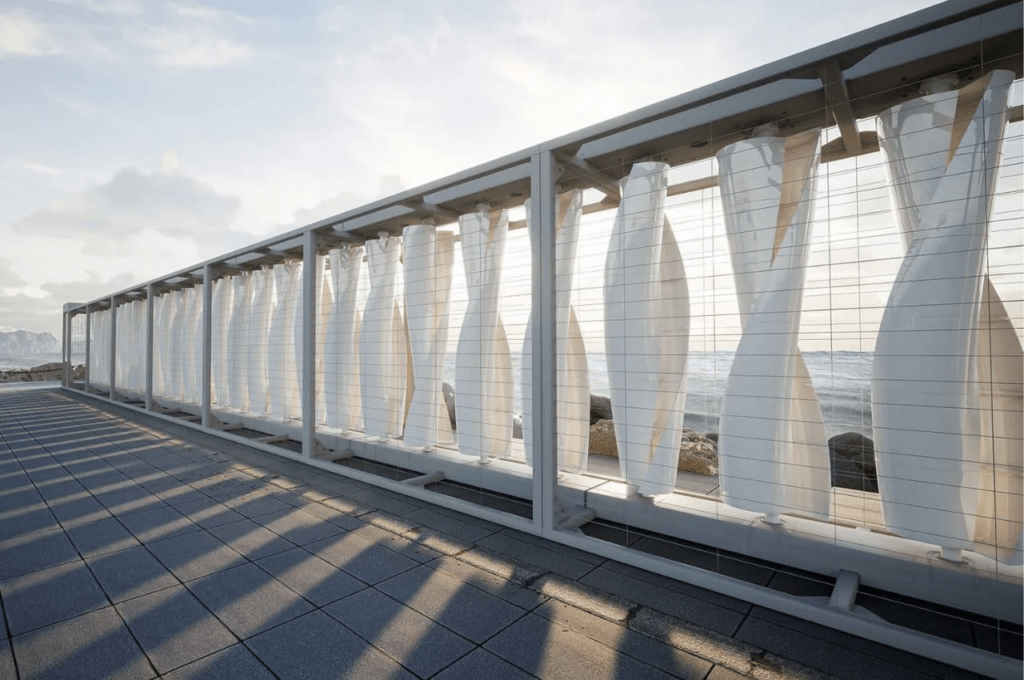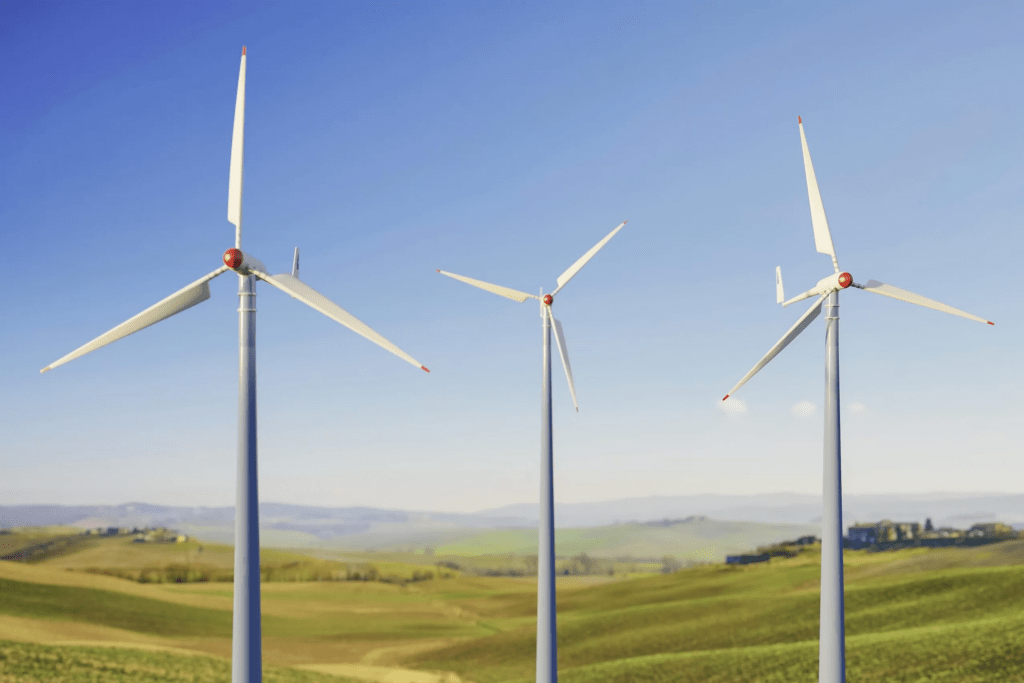In the ever-evolving landscape of renewable energy, a groundbreaking innovation is set to challenge the dominance of solar panels in urban settings. The O-Wind Turbine, developed by a startup in Lancashire, UK, presents a spherical solution that could reshape how we harness wind energy in cities and homes, while potentially offering significant ecological benefits.
The Spherical Wonder: How It Works
The O-Wind Turbine is a marvel of engineering simplicity and effectiveness. Unlike traditional wind turbines that require specific wind directions, this spherical device can capture wind energy from any direction, making it ideal for urban environments where wind patterns are often unpredictable and turbulent.
Its spherical design is inspired by NASA’s Savonius turbine, featuring vertical openings that allow wind to pass through and rotate the sphere on its axis. With a diameter of just 25 cm, the O-Wind Turbine is compact enough for balconies, rooftops, and small gardens. Moreover, it boasts a low wind speed threshold, capable of generating electricity at just 2 m/s, making it effective even in areas with gentle breezes.
Performance and Potential
While official performance figures are yet to be released, early prototypes of the O-Wind Turbine have shown promising results, including the ability to generate up to 3 watts in wind tunnel tests. Its potential for scalability is significant, with multiple units capable of dispersing large amounts of energy collectively. This adaptability to various urban settings—from residential to commercial—positions the O-Wind Turbine as a game-changer in renewable energy.

A Green Revolution in Urban Energy
The ecological impact of the O-Wind Turbine could be substantial, addressing several key environmental concerns that are increasingly critical in our rapidly urbanizing world. One of the most significant benefits is its potential to reduce the carbon footprint of cities. By providing a clean and sustainable energy alternative, the O-Wind Turbine could significantly reduce urban reliance on fossil fuels, which are a major contributor to greenhouse gas emissions. The reduction in fossil fuel usage would directly translate into lower carbon emissions, playing a crucial role in the fight against climate change and air pollution in densely populated areas.
Another important aspect of the O-Wind Turbine’s ecological impact is its minimized land use. Unlike large wind farms or expansive solar arrays, which often require significant amounts of land and can disrupt natural habitats, these compact turbines can be seamlessly integrated into existing urban structures. This allows them to preserve natural habitats and reduce land use conflicts. In cities where space is at a premium, the ability to install these turbines on rooftops, balconies, or small gardens means that urban green spaces and wildlife areas can be maintained and even expanded.
The O-Wind Turbine also has the potential to mitigate the urban heat island effect, a phenomenon where cities become significantly warmer than their rural surroundings due to human activities. By increasing the use of local, clean energy sources like the O-Wind Turbine, the need for centralized power plants, which are often large contributors to heat generation, could be reduced. This shift could help lower overall urban temperatures, making cities more livable and reducing the demand for energy-intensive cooling systems during hot weather.
In terms of noise pollution, the O-Wind Turbine offers a significant advantage over traditional wind turbines. The design of the O-Wind is expected to produce less noise, making it much more suitable for densely populated areas where noise levels are a constant concern. This reduction in noise pollution could lead to an improved quality of life for urban residents, providing them with the benefits of renewable energy without the associated disruptions. Additionally, a quieter environment is less likely to disturb local wildlife, further contributing to the ecological balance in urban settings.
The design of the O-Wind Turbine also addresses a common environmental concern with traditional wind turbines—bird and bat safety. Traditional turbines have often been criticized for posing a risk to these animals, as the large rotating blades can lead to collisions. However, the enclosed design of the O-Wind Turbine minimizes this risk, helping to preserve urban biodiversity and protect vulnerable species that inhabit or migrate through cities.
Another critical ecological benefit is the potential increase in energy independence that the O-Wind Turbine could provide. By enabling more widespread adoption of wind energy in urban areas, it reduces the reliance on long-distance power transmission, which often requires extensive networks of power lines that can disrupt habitats. Moreover, reducing the need for long-distance transmission also cuts down on energy losses that occur during transmission, making the overall energy system more efficient and less wasteful.
The compact size of the O-Wind Turbine also contributes to its ecological efficiency. It likely requires fewer raw materials to produce compared to larger renewable energy systems, which means that the manufacturing process could have a smaller ecological footprint. This material efficiency, combined with the turbine’s durability and longevity, could lead to a lower overall environmental impact throughout the product’s life cycle.
Beyond the tangible ecological benefits, the O-Wind Turbine has the potential to foster greater education and awareness around renewable energy. As a visible and personal wind energy device, it could serve as a daily reminder of the importance of sustainable energy practices, increasing public engagement and potentially driving broader adoption of renewable energy technologies. This could have a ripple effect, encouraging more environmentally conscious behavior in other areas of life and contributing to a culture of sustainability.
Furthermore, the O-Wind Turbine is highly complementary to solar energy. Its ability to operate under various weather conditions, including at night and during storms, makes it an excellent partner to solar panels, which are dependent on sunlight. By working together, these two technologies could create a more stable and efficient renewable energy system, reducing the need for environmentally harmful energy storage solutions and ensuring a more consistent supply of clean energy.
Finally, the O-Wind Turbine’s resilience to climate change is another crucial ecological benefit. As climate change leads to more extreme weather events, including stronger and more frequent winds, the turbine’s ability to operate in high wind speeds (up to 200 km/h) makes it a more adaptable and reliable energy solution compared to some other renewable technologies. This resilience could make the O-Wind Turbine an essential component of future urban energy systems, helping cities to better cope with the impacts of climate change while continuing to reduce their carbon footprints.

Challenges and Future Outlook
Despite its promising potential, the O-Wind Turbine faces several challenges that must be addressed:
- Efficiency Optimization: Further work is needed to maximize energy output and overall efficiency.
- Durability Testing: Ensuring long-term reliability in various weather conditions is crucial.
- End-of-Life Considerations: A robust recycling or upcycling program for the turbines will be essential.
- Grid Integration: Developing seamless integration with home energy systems and the grid will be key.
- Ecological Impact Studies: Comprehensive studies on the long-term ecological impacts of the O-Wind Turbine will be necessary.
A Promising Step Towards Sustainable Urban Living
The O-Wind Turbine represents a significant leap forward in urban renewable energy technology. By addressing the limitations of traditional wind and solar energy in urban settings, it opens up new possibilities for sustainable city living. This technology could play a crucial role in decarbonizing our cities, enhancing urban biodiversity, and creating more resilient and self-sufficient communities.
As the O-Wind Turbine moves closer to commercial reality, it could become a common sight on balconies and rooftops, silently spinning to power our urban lives while contributing to a healthier planet.
Related Content
- Motionless Wind Energy: A Quiet Revolution in Renewable Power
- Save The Planet Conservation Sticker – Eco-Friendly Car Window Decal – Vinyl Material – Scratch Resistant – Adhesive Backing – Suitable for Cars, Laptops, and
- China building two-thirds of world’s wind and solar projects
- HEIYOUCAM 2-Pack Solar-Powered Security Cameras Wireless Outdoor
- 4G LTE EU Solar Security Camera with SIM Card Slot
- 1pc Solar Watering Bottle With String Light, Hanging Solar Waterfall Light
- Modular rotary turbine walls are revolutionizing urban wind
- Rooftop Wind Turbines: Revolutionizing Urban Renewable energy
- Overcoming Technical Barriers Through Innovations in Wind Turbine Technology
